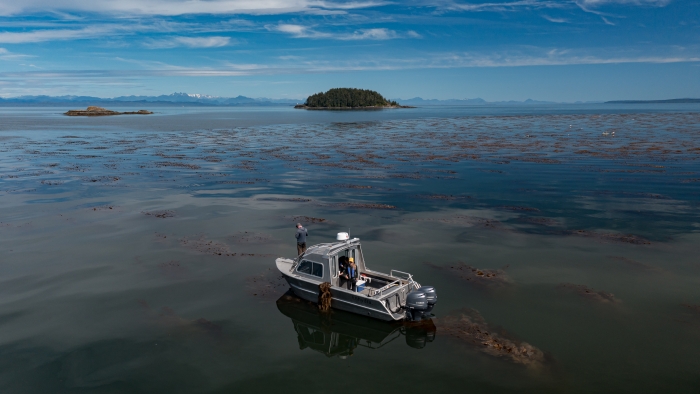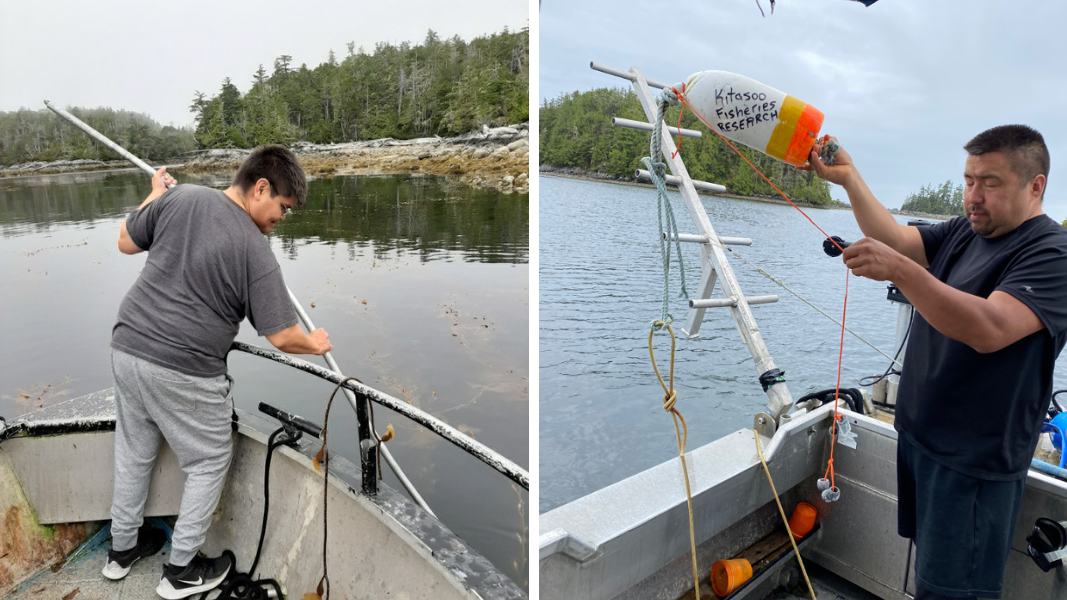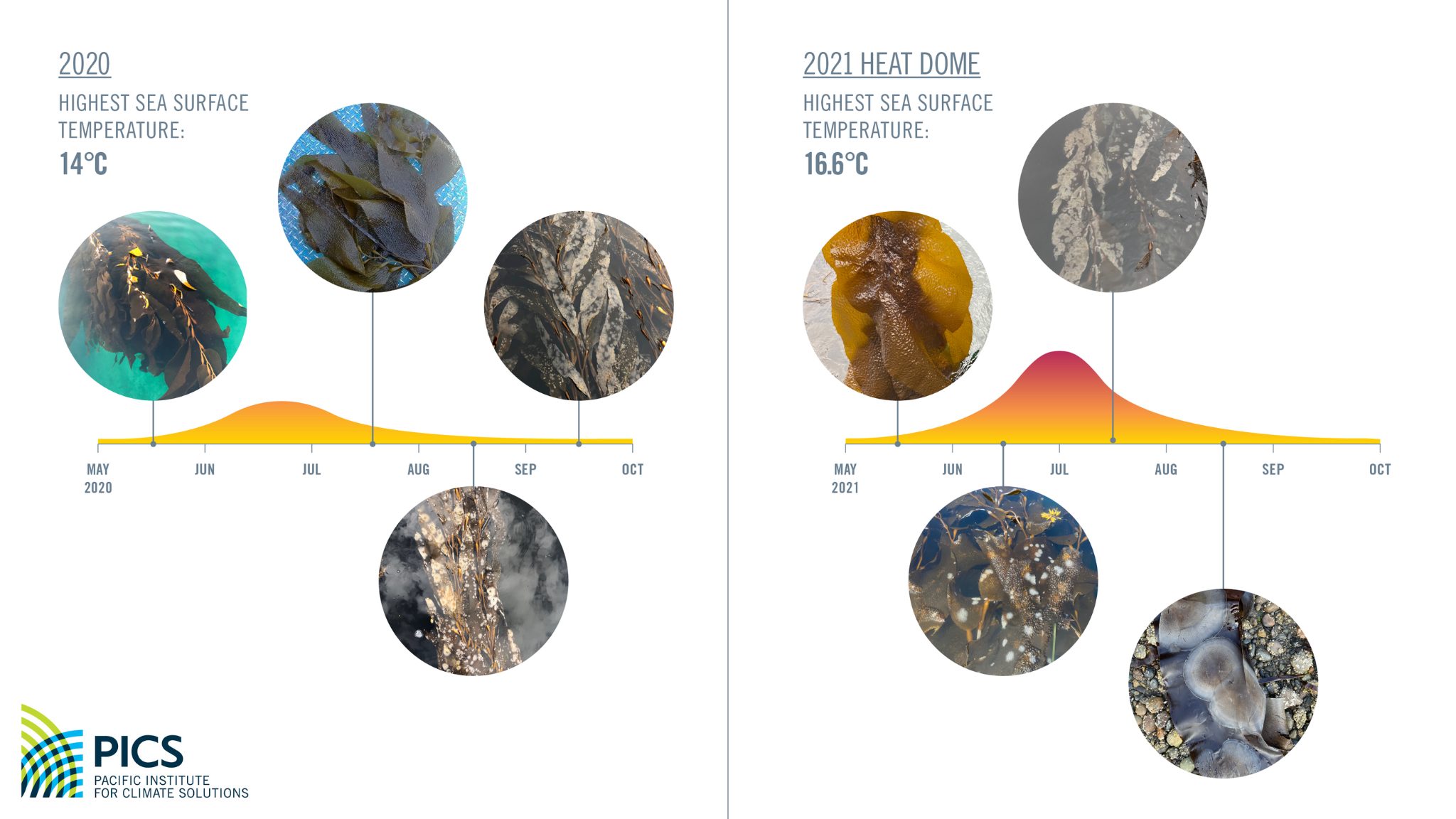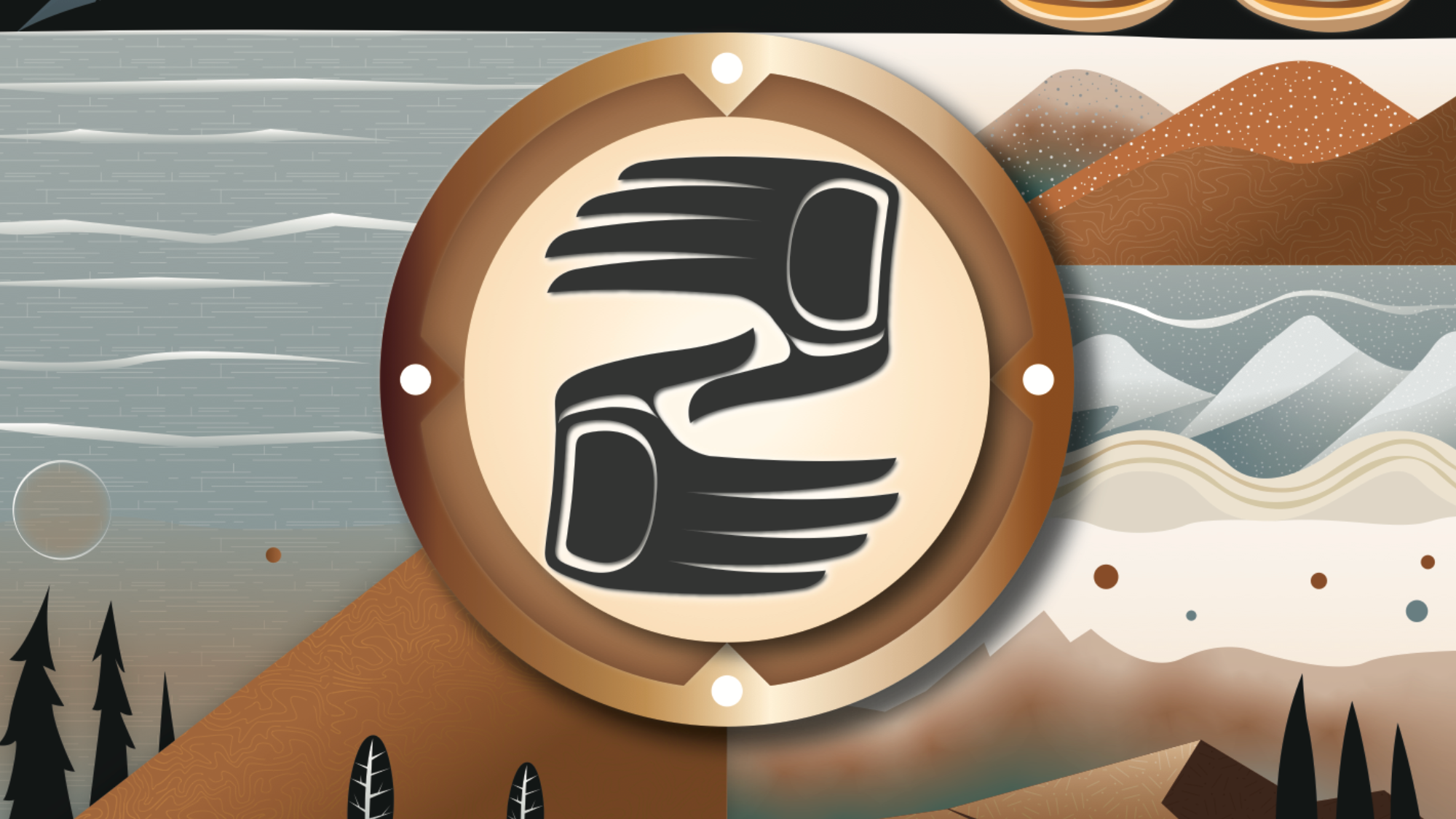
Kelp beds off BC’s coast face climate-related challenges, but interventions may help the kelp endure, according to a recent final report from the Undersea Forests project.
The project is a partnership between Simon Fraser University and the Central Coast Indigenous Resource Alliance (CCIRA), which encompasses the four First Nations of BC’s central coast (Heiltsuk, Kitasoo Xai’ xais, Nuxalk and Wuikinuxv Nation.)
It looked at how ocean temperature, wave energy, kelp and herbivores affect the growth of bryozoan, a small sea animal that thrives in warmer temperatures on the blades of kelp. It also explored climate-resilient ways to care for and harvest kelp, an essential coastal resource used for food, fishery and ceremony.
Bryozoans attach to kelp and heavy encrustation can severely damage, sink and kill the plant. On Canada’s East Coast, spread of an invasive bryozoan, fueled by warming sea temperatures, has destroyed up to 98 per cent of kelp biomass in some locations.
The tiny white animal is native to the West Coast, but Coastal Guardian Watchmen from CCIRA member Nations observed a severe outbreak during the marine heat wave, 2014-2016’s “the blob”, that damaged beds of kelp.
“The project addresses a symptom of climate change that affects a key traditional resource for Central Coast First Nations,” says CCIRA Science Coordinator Dr. Alejandro Frid. “Its pairing of knowledge from the Nations and Western science has produced key insights for addressing a formidable problem.”
“The kelp project is a great collaborative effort to gain a better understanding of changes brought on by climate change,” says Mike Reid, aquatics manager at the Heiltsuk Integrated Resource Management Department. “The kelp monitoring is the canary in the coal mine; when there are impacts or increases in bryozoan we can expect other potential issues with other species that use the kelp understory as habitat cover.
“Our Coastal Guardian Watchmen are experienced in the state of our ecosystem, and when things are out of place or out of characteristics, such as the increase in bryozoan on the kelp, it is easy for them to see the difference and sound the alarm.”
The June 2021 heat dome, which sent temperatures throughout BC skyrocketing, gave the project an opportunity to see the effects of a heat spike in real time. The Coastal Guardian Watchmen, key co-investigators, took to the water, capturing how the temperature spike affected 10 kelp beds off BC’s Central Coast.

“We co-developed and co-implemented this project with CCIRA, which has allowed us to adapt our research strategies and priorities as we go, leading to knowledge co-creation,” says lead researcher Dr. Danielle Denley, a post-doctoral PICS Scholar with Dr. Anne Salomon’s Coastal Marine Ecology and Conservation Lab.
“The data the Coastal Guardian Watchmen collected have been essential in our emerging understanding of how bryozoan growth on kelp may change under future climate conditions and what that means for the long-term health of kelp beds.”
That data informed results, recently reported to CCIRA and member Nations, that confirm bryozoan growth was greater during periods of warmer sea water temperatures – and the health of the kelp worsened during and just after those warm periods.

The study also found the health of kelp may decline earlier in the season, as warming seawater temperatures lead to earlier seasonal peaks in bryozoan.
However, the kelp beds maintained their size and density from one year to the next during the study. More work is needed to know if this relationship with temperature and recovery is consistent long-term.
The final report recommends strategies to support kelp’s resilience as ocean temperatures continue to rise.
The report suggests harvesting kelp from locally cooler, wave-exposed areas and earlier in the season, avoiding times when bryozoan growth is at its peak.
It also recommends strategically thinning dense kelp beds to increase seawater flow and decrease seawater temperature, making the bed less hospitable to the bryozoan.


